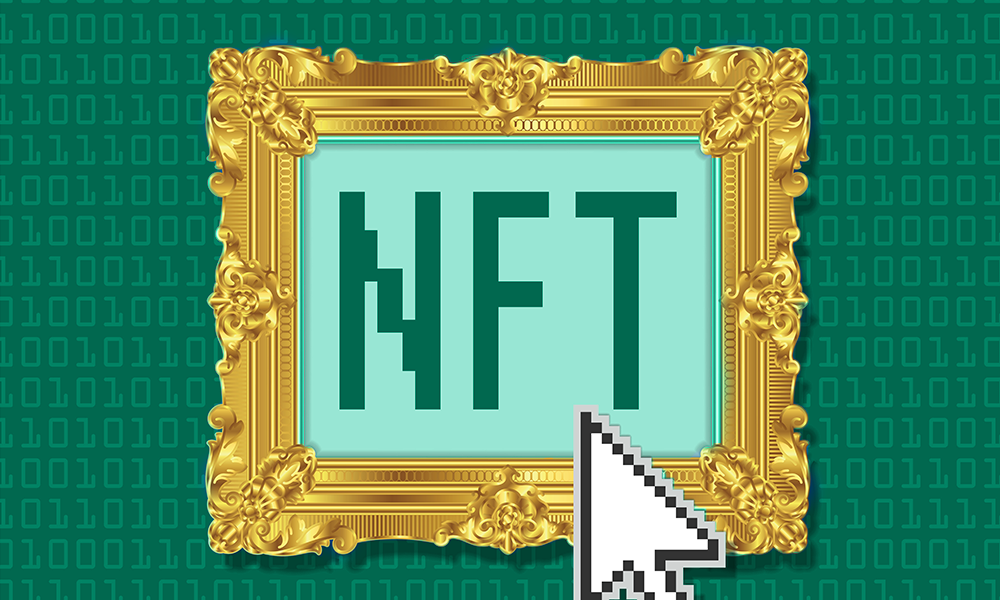The European Union Intellectual Property Office (EUIPO) has issued its guidelines on the classification of goods and services relating to NFTs, establishing the bases to approach the legal challenges resulting from their registration and the scope of protection afforded to owners.
Non-fungible tokens, or NFTs, have come to hold a fundamental place in the digital universe and, specifically, in the so-called Web3. Although at present NFTs are scarcely used beyond mere collectibles, the growing interest in the metaverse is making non-fungible tokens extremely useful assets in our virtual lives.
But what are NFTs? They are basically certificates that uniquely identify a specific digital asset by means of cryptography and blockchain technology, made even more relevant following the popularity of the Ethereum network and the ERC-721 and ERC-1155 standards. The aim is basically to turn a digital asset that would otherwise be perfectly easy to replicate into something totally unique.
Many companies are starting to mint a wide variety of digital assets such as digital products (i.e. the Balmain and Barbie partnership), physical goods (such as Nike sneakers “authenticated” by the StockX platform) and even services (like the sale of NFT tickets on Ticketmaster).
In this race to explore new markets, infringing conducts have also taken place as a result of the unauthorized uses of famous brands to create NFTs. One of the most paradigmatic – or at least mediatic – is the so-called MetaBirkin case, in which Hermès sued the artists Eric Ramírez and Mason Rothschild before the U.S. District Court for the Southern District of New York for designing, minting and offering handbags inspired by Hermès’ famous Birkin handbag, under the name “MetaBirkins”. The creators of this virtual collection base their defense on the First Amendment of the US Constitution, that is, on the artists’ right to free speech. The New York-based court has yet to rule on whether Hermès’ trademark rights will prevail over Maison Rothschild’s freedom of expression.
In view of the proliferation of similar cases, brands are considering whether they should file registration applications to protect their trademarks in these new virtual spaces. Indeed, we are witnessing an exponential increase in the number of trademark applications for these types of assets. In view of the principle of specialty in trademark law, if a trademark is registered in class 25 (textiles), for example, there is some doubt as to whether or not the protection conferred extends to “digital” textiles.
The EUIPO’s guidelines as from 2023
In this context, the EUIPO has published the principles on which it has based its interpretation of the 12th Edition of the Nice Classification, which will come into force on January 1, 2023, in which NFTs have been classified in class 9 as “downloadable digital files authenticated by non-fungible tokens [NFTs]”.
Specifically, the EUIPO offers the following guidelines:
- It defines NFTs as “unique digital certificates, registered in a blockchain, that are used as a means of recording ownership of an item. The term is not understood to mean the digital item itself, rather the means of certification.”
- It concludes that the term “virtual goods” in the Nice Classification lacks precision. As a result, when describing these virtual products, the EUIPO will require a certain degree of specificity with respect to the actual products to be identified, and the term “NFT” will not be accepted generically or alone.
- The EUIPO requires that the specific virtual goods to be used as a trademark must be defined, such as “downloadable virtual goods, namely virtual clothing” or “downloadable digital pieces of furniture authenticated by non-fungible tokens”.
With these guidelines, the EUIPO is attempting to legally protect the new face of technology, acknowledging the importance that institutions are attaching to changes that have taken place in the current digital environment, and, in particular, the need to adapt the system in order to have a legal framework giving trademark owners legal certainty in the virtual universe.
Although these guidelines offer a harmonized base as a key element to protect these assets on the register, a wide range of aspects are yet to be defined and will have to be clarified in the context of a decision-making practice that does not yet exist. For example, whether an NFT can identify downloadable or non-downloadable software or even a service. The EUIPO also gives acceptable examples for protecting products for designs in virtual environments using classes 35 and 41: “providing an online virtual environment for trading virtual art and virtual art tokens” and “entertainment services, namely, providing virtual environments in which users can interact for recreational, leisure or entertainment purposes”, respectively.
In any event, the EUIPO has just ended the consultation phase for the new guidelines on trademark practice. Given the speed with which Web3 technologies change and are re-invented, we cannot rule out new changes arising in the next few months. We will be watching carefully.
Marta González Aleixandre
Garrigues Intellectual Property Department






